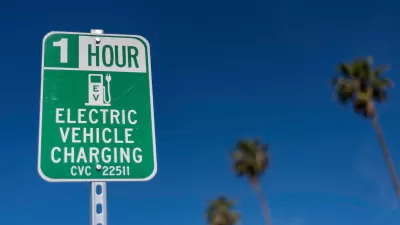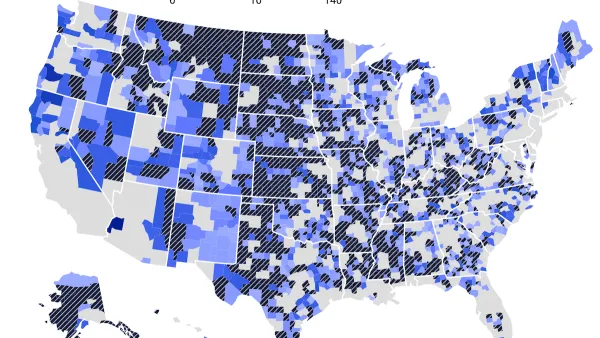With only 50,000 electric cars on the road now, many charging stations are free - but what happens when the number multiplies? Electric car charging companies are counting on the number increasing and are determining "how to charge for the charge."
Already a problem has developed with the free chargers - cars stay parked at the charging station longer than necessary. But deciding what to charge, and how to charge, for charging these cars is no simple matter.
The Wall Street Journal's Rebecca Smith interviews professionals in the electric vehicle (EV) charging industry to get an idea as to what the challenges and the solutions are and finds there are different approaches. Paying to 'refuel' an electric car requires a new model, unlike the days of gas stations on the four corners of an intersection, each keeping an eye on how much the other is charging for a gallon of gasoline.
"ECOtality Inc.,(a) big installer of charging stations, said in August it is dispensing free electricity at about 3,000 Blink-branded public charging points (see You-Tube of a consumer charging her Nissan Leaf). But it expects to begin charging fees this fall.
As charging companies begin collecting fees, it looks like the most common approach will be to bill customers by length of time spent charging or by a monthly subscription fee, not the amount of electricity dispensed."
"Free is just not a sustainable model," says Colin Read, ECOtality's vice president of corporate development in San Francisco.
"Mark Duvall, an electric-vehicle expert at the Electric Power Research Institute in Palo Alto, Calif., says a typical plug-in car can soak up 3.3 kilowatt-hours of electricity an hour or 30 to 50 cents of electricity. He figures that means a price of $1 to $2 an hour is fair.
NRG Energy Inc. is using a subscription model for the 28 fast-charging stations that it's built in Dallas-Fort Worth and Houston, with dozens more on the way. The price is $39 a month for unlimited access to the public chargers that can fully charge most cars in half an hour or less, and $89 a month for unlimited use of fast public chargers and a slower 240-volt home charger."
It is not clear to this correspondent how a low charging cost or a monthly subscription fee for unlimited access prevent the vehicle owner from leaving the vehicle at the station longer than necessary.
NRG also appears in a related article in this Wall Street Journal special energy section. They installed the solar panels for the "Washington Redskin's stadium last year - the largest parking-lot solar installation in the NFL."
Ms. Smith did not indicate whether the cost for charging EVs would include a transportation cost akin to a gas tax, the topic of the cover article (Planetizen: Solutions to Fixing the Gas Tax Crisis) of the Sept. 17 energy section.
As for the number of EVs multiplying, one current estimate is that "(s)ales of plug-in electric vehicles will reach 400,073 units nationwide by 2020, according to an estimate released Tuesday by Pike Research, a number far short of the Obama administration's goal of seeing 1 million EVs on the road by 2015."
FULL STORY: Driving Directions: What to Charge for a Charge?

Planetizen Federal Action Tracker
A weekly monitor of how Trump’s orders and actions are impacting planners and planning in America.

Map: Where Senate Republicans Want to Sell Your Public Lands
For public land advocates, the Senate Republicans’ proposal to sell millions of acres of public land in the West is “the biggest fight of their careers.”

Restaurant Patios Were a Pandemic Win — Why Were They so Hard to Keep?
Social distancing requirements and changes in travel patterns prompted cities to pilot new uses for street and sidewalk space. Then it got complicated.

Platform Pilsner: Vancouver Transit Agency Releases... a Beer?
TransLink will receive a portion of every sale of the four-pack.

Toronto Weighs Cheaper Transit, Parking Hikes for Major Events
Special event rates would take effect during large festivals, sports games and concerts to ‘discourage driving, manage congestion and free up space for transit.”

Berlin to Consider Car-Free Zone Larger Than Manhattan
The area bound by the 22-mile Ringbahn would still allow 12 uses of a private automobile per year per person, and several other exemptions.
Urban Design for Planners 1: Software Tools
This six-course series explores essential urban design concepts using open source software and equips planners with the tools they need to participate fully in the urban design process.
Planning for Universal Design
Learn the tools for implementing Universal Design in planning regulations.
Heyer Gruel & Associates PA
JM Goldson LLC
Custer County Colorado
City of Camden Redevelopment Agency
City of Astoria
Transportation Research & Education Center (TREC) at Portland State University
Camden Redevelopment Agency
City of Claremont
Municipality of Princeton (NJ)





























